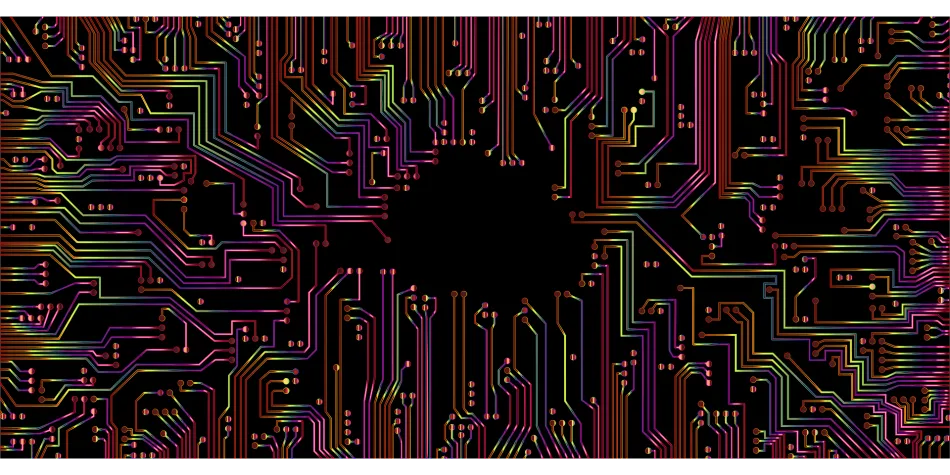Exploring the role of advanced circuits in next-generation technologies
As the demand for smarter, faster, and more efficient electronic devices grows, the development of advanced circuits is becoming central to the evolution of next-generation technologies.
This article was first published on
xtpl.comExploring the Role of Advanced Circuits in Next-Generation Technologies
As the demand for smarter, faster, and more efficient electronic devices grows, the development of advanced circuits is becoming central to the evolution of next-generation technologies. Advanced circuits, which differ significantly from traditional circuit technologies, are enabling breakthroughs in computing, communication, sensing, and more. By leveraging new materials and sophisticated design methodologies, advanced circuit boards and solutions are creating the foundation for future innovations in electronics.
Introduction to Advanced Circuits in Modern Technologies
Circuit technology has come a long way from the early days of simple, rigid designs. Traditionally, circuits were made with basic components and materials, limiting their flexibility and efficiency. Today, advanced circuits offer improved performance, flexibility, and integration capabilities, making them pivotal in driving technological innovation.
The shift from traditional to advanced circuits involves a focus on newer materials, more sophisticated manufacturing techniques, and the ability to handle greater complexity. These circuits incorporate materials like advanced polymers and nano-technologies, enabling superior electrical conductivity and energy efficiency. The evolution of circuit technology has also led to the development of advanced circuits PCB (printed circuit boards) and advanced circuits assembly processes that allow for more compact and robust electronic solutions.
In next-generation technologies, advanced circuits are significant because they provide the infrastructure for innovations such as quantum computing, artificial intelligence (AI), the Internet of Things (IoT), and 5G communication networks. Their improved speed, efficiency, and integration capabilities are critical to the development of these advanced systems.
Understanding the Components of Advanced Circuits
Advanced circuits are composed of cutting-edge materials and components that distinguish them from traditional circuits. These components are designed to handle greater electrical loads, support miniaturization, and integrate multiple functions into a single circuit. The use of advanced materials such as silicon carbide, graphene, and other nano-materials enhances the performance of electronic advanced circuits, making them faster and more efficient.
One of the key differences between traditional circuits and advanced circuits is the role of nano-technologies. Nano-materials allow for better control over electrical properties and enable more compact designs. This is particularly important in applications like mobile devices, wearables, and advanced circuit boards, where space is limited, but performance must be optimized.
In addition to materials, advanced circuit engineering plays a significant role in enhancing the capabilities of these circuits. By utilizing new design methodologies and sophisticated fabrication techniques, engineers can create advanced circuit solutions that offer superior speed, energy efficiency, and reliability.
The development of advanced circuits has enabled significant breakthroughs in various fields, including computing, communication, and sensing technologies. One of the most important innovations is the ability to miniaturize circuits while improving their performance. Advanced circuits PCB and advanced circuits assembly processes now allow for the creation of highly compact, multi-functional devices that were previously impossible to achieve with traditional circuit technologies.
For instance, advanced circuit solutions are now driving innovations in areas such as high-performance computing, where increased processing speed and data bandwidth are essential. These circuits enable faster data transfer rates, allowing for real-time processing of large data sets, which is crucial in fields such as AI, big data analytics, and autonomous systems.
Another key application is in communication systems, where advanced circuits help reduce power consumption while increasing bandwidth. The ability to handle higher data loads with lower energy use is critical for the expansion of 5G networks and IoT devices. Furthermore, advanced circuits enable new sensing technologies, providing higher precision and faster response times, which are essential for applications such as smart cities and industrial automation.
Advanced circuits do not operate in isolation—they are often integrated with other cutting-edge technologies to create more powerful and versatile systems. For example, the integration of advanced circuits with quantum computing technologies offers the potential for solving problems that are beyond the capabilities of traditional computers. Similarly, combining advanced circuits with AI enables more efficient processing and decision-making in real-time applications, such as autonomous vehicles and robotics.
Another promising area of integration is with IoT. By incorporating advanced circuit boards and flexible electronics, IoT devices can be made smaller, more energy-efficient, and capable of operating in a wider range of environments. The synergistic combination of advanced circuits with next-generation technologies opens up new possibilities for everything from smart homes to industrial automation.
One of the key benefits of this integration is the ability to create tailored solutions that offer better performance than standalone systems. By leveraging the unique strengths of advanced circuits, such as improved processing speed and energy efficiency, combined with the capabilities of quantum computing, AI, and IoT, engineers can design systems that are far more powerful and versatile than their predecessors.
Future Directions: Challenges and Opportunities
The field of advanced circuits is rapidly evolving, with several emerging trends set to shape its future. One of the most exciting areas of research is 3D integration, where multiple layers of circuitry are stacked on top of one another to create highly compact and powerful devices. This method can significantly increase the performance of electronic devices while reducing their size, making it ideal for next-generation applications such as wearable tech and advanced medical devices.
Another key trend is the development of bio-compatible circuits, which could be used in medical implants and other bioelectronics. These circuits would need to be flexible, durable, and safe for use inside the human body, posing unique engineering challenges. However, the potential applications in healthcare are enormous, from advanced prosthetics to real-time health monitoring systems.
Despite the exciting opportunities, there are also challenges that must be addressed. Scalability is one of the main hurdles, as producing advanced circuits at scale while maintaining quality and performance is difficult. Manufacturing costs are also a concern, especially as circuits become more complex and require more sophisticated materials and processes. Additionally, environmental impact considerations are becoming more important, as the demand for greener, more sustainable production methods grows.
Advanced circuits are playing a critical role in the development of next-generation technologies, offering superior performance, flexibility, and integration capabilities. From enabling faster, more efficient computing systems to supporting innovations in communication and sensing, advanced circuits are at the heart of many technological breakthroughs.
As research continues and new materials and methodologies are developed, the potential of advanced circuits will only grow. By addressing the current challenges and continuing to innovate, the field of advanced circuits will help drive the next wave of technological advancements, reshaping industries and enhancing the capabilities of modern electronics.


